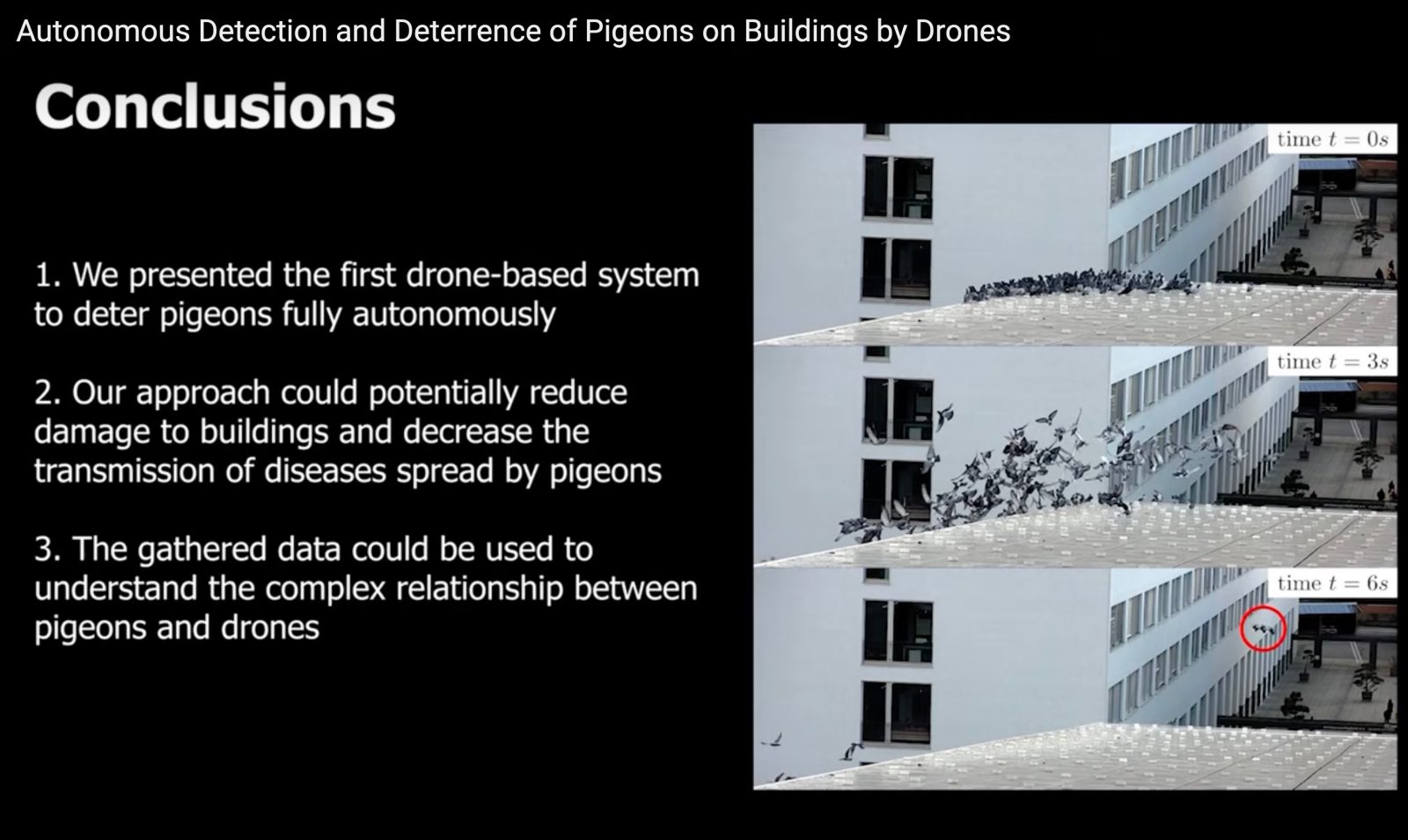
We now present a weekend DIY tech challenge for urban geeks tired of cleaning thickly caked bird droppings off their cars. It involves replicating a Swiss research project by linking their cameras to a computer, and programming that to automatically dispatch a drone to scatter pigeons that have placed themselves in bombs-away position.
That, ish-ly, is what researchers at Switzerland’s École polytechnique fédérale de Lausanne (EPFL) did when they noticed large groups of pigeons were causing the roof of the university’s SwissTech Convention Center to be frequently cleared of dense layers of droppings. The recurring cleaning efforts were laborious and costly (not to mention gag-inspiring). But they were also necessary to remove untold kilos of muck that can spread disease and – if left to collect unchecked – could feasibly undermine the roof’s stability. The damage done by such avian waste is no laughing matter: Some studies show pigeon poop costs $1.1 billion each year in the US alone.
To avoid such degradation – and in the interest of sparing the maintenance workers endless hours of dreck disposal – EPFL engineers and computer cracks began brainstorming automated ways to prevent the problem in the first place. They ultimately decided to test the use of a drone to scramble the pigeons. The craft was to be dispatched by an artificially intelligence-enhanced computer using a roof-mounted camera to supply visual evidence of the waste-oozing creatures starting to congregate.
As their paper explains in thorough yet arguably exhausting detail, the EPFL researchers used the camera to feed video into a ground station computer, which had been linked with a neural network to analyze images being received. During an initial three-week observation period, the system acclimated itself the pigeons’ comings and goings, and was eventually able to calculate how many of the birds had assembled on the structure – and even estimated their GPS coordinates.
The project then introduced a Parrot ANAFI drone to be dispatched by the computer system each time the camera picked up a significant number of pigeons present on the roof. Armed with the exact placement of the befouling birds, the quadcopter zoomed into action, either chasing them off upon approach or getting them to scram through prolonged hovering.
The result? After a five-day period testing that second phase, researchers found that the drone –automatically deployed by the system a total of 55 times – not only dramatically slashed the amount of time the pigeons were present on the roof, but even cut the frequency of them returning to land there in the first place.
“To the best of our knowledge, this is the first drone-based system to deter pigeons fully autonomously,” the EPFL research paper says. “Our approach could reduce damage to buildings and decrease the transmission of diseases spread by pigeons. In addition, the gathered data could be used to understand the complex relationship between pigeons and drones.”
The only slight hitch in the experiment arose from safety regulations requiring a human monitor to authorize the computer’s orders to the drone to take flight and scramble the pigeons. The authors hope that in future tests, that small impediment to complete automation can be avoided.
FTC: We use income earning auto affiliate links. More.



Comments